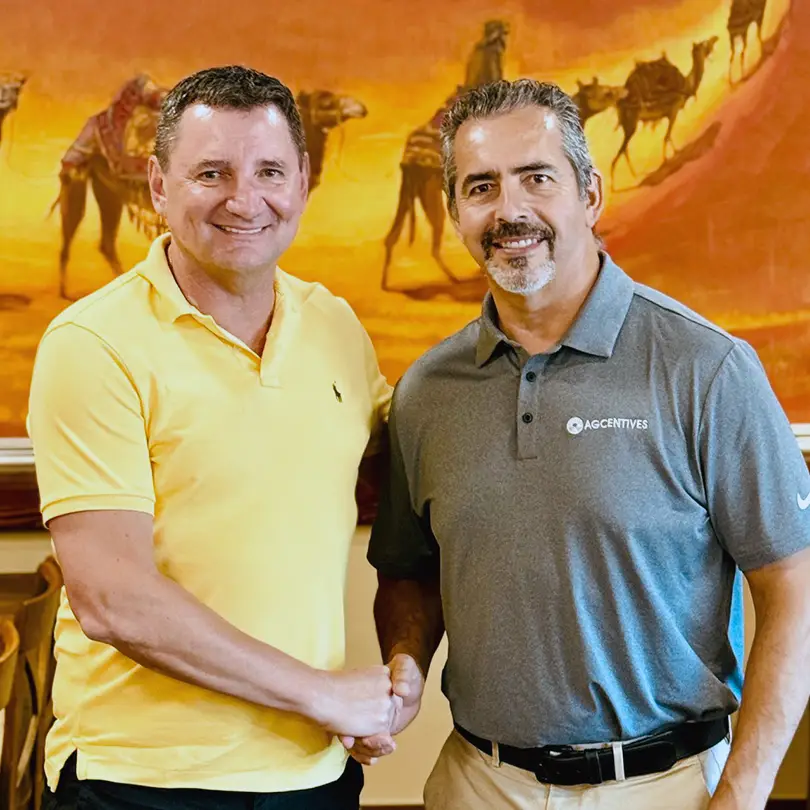For more than two decades, Albert Romo, Founder & CEO of Romo Incentives Group, has been helping businesses of all sizes uncover and secure tax credits that fuel innovation, hiring, and expansion. Drawing on his experience at PriceWaterhouse, KPMG, and the California Franchise Tax Board, Romo has guided companies in securing hundreds of millions of dollars in federal and state incentives. His firm blends deep technical expertise with audit-ready documentation, supporting industries from agriculture to advanced manufacturing.

In this exclusive interview with New Times Magazine Publisher Sergey Ivannikov, Albert Romo discusses his journey, the mission behind Romo Incentives Group, and how tax incentives are transforming the way businesses plan, hire, and grow.
Mr. Romo, you began your career at PriceWaterhouse and the California Franchise Tax Board, then served as a Business Incentives Specialist with KPMG. What did those experiences teach you about incentives, nexus, and unitary filings — and how do they influence Romo Incentives Group’s approach today?
Every professional position I’ve held has prepared me in some way for my current role. From the professionalism and client-centric focus I developed at Pricewaterhouse; to the audit techniques I gained at the Franchise Tax Board; to the technical knowledge of incentive programs I acquired at KPMG — each experience has been invaluable. Collectively, they have shaped Romo Incentives Group’s approach, ensuring that we deliver tax incentive services with the highest level of technical expertise and professionalism.
Before entering tax, you worked in agriculture and winemaking. How does your background in viticulture and farming help you connect with clients in agribusiness and beyond?
I grew up in Sonoma County’s wine country. My father worked for a large winery, and I followed in his footsteps for several years while attending community college there. Grapegrowing and winemaking have been part of my life from the beginning, and that experience has been invaluable in helping me communicate how tax incentives apply to farmers and agribusiness. Understanding the crop cycle and the ways that innovations in farming methods improve yields and efficiencies allows us to maximize tax savings for our clients.
You’ve said it’s rewarding to help clients reduce tax burdens so they can innovate, hire, and even lower their carbon footprint. Could you share a recent example that captures this impact?

ROMO Incentives Group has helped clients secure several hundred million dollars in incentives. What principles guide you in ensuring those savings are sustainable and audit-proof?
A few years ago, one of our farming clients was considering a transition to organic farming but believed it would be too costly. Once we explained that much of the cost and time invested in converting their operation would qualify for a significant R&D Tax Credit, they decided to move forward. Over the next couple of years, they were able to generate six-figure tax credits—making the transition both financially feasible and sustainable.
Understanding our clients’ businesses and thoroughly documenting the activities taking place are key to identifying tax incentives that can withstand an audit. We have never deviated from this approach, which has resulted in only one minor audit adjustment in 23 years of providing tax incentive services. In the last 10 years, every client audit has resulted in “no change” to the incentives we secured for them.
You often describe the R&D Tax Credit as a “Business Improvement” credit, not limited to labs or tech companies. What kinds of everyday improvement projects qualify but are often overlooked?
Any activity a business undertakes to improve a product or process within their organization can potentially qualify for the R&D Tax Credit. The credit was created to promote innovation and encourage increases in efficiency and quality. Depending on the industry, qualifying activities can look very different.
For example:
• Implementing new technology or equipment for a manufacturer
• Experimenting with new irrigation or harvesting techniques for a walnut grower
• Developing a new software application for a tech firm
• Testing a new feed formula for a cattle rancher
With federal credits around 6.5% of qualified costs—and combined federal and California benefits reaching about 13%—how do you help clients structure these into multi-year cash-flow strategies?
Most businesses that qualify for tax credits engage in these activities every year. Innovation and expansion aren’t optional—if a company isn’t constantly improving, it risks falling behind competitors. The free market rewards businesses that adapt and innovate, while those that don’t become obsolete. We help our clients structure multi-year strategies by creating tools that make it easier to track the projects and activities that generate credits. This way, businesses can consistently capture incentives year after year, turning them into reliable cash-flow advantages.

It’s estimated that 90% of eligible companies don’t claim R&D credits. What are the biggest myths or misunderstandings that keep businesses from taking advantage of this opportunity?
Most businesses assume they don’t qualify because they believe they must be creating something groundbreaking or revolutionary. In reality, the activities only need to be new to them — not new to the world — to qualify. This misunderstanding alone prevents many companies from accessing valuable credits that could significantly reduce their tax burden.
Your firm has specialists with former IRS and FTB experience. What are the most common documentation gaps you see, and how do you prepare clients before an exam?
The key is to avoid documentation gaps altogether — and that’s where we come in. Our job is to thoroughly document the analysis so nothing is left to chance. When an audit does occur, we immediately take over the process as soon as our client receives notice. It’s imperative that all communication go through us to ensure accuracy and prevent miscommunication.
The Work Opportunity Tax Credit (WOTC) can provide up to $9,600 per qualified hire. How do you help employers build hiring workflows that maximize this credit without slowing down operations?
We use an electronic screening system that integrates directly into our clients’ onboarding process. Every job applicant receives a link to our questionnaire, which screens them for the various eligibility criteria while they are completing their required onboarding documents. This ensures compliance and maximizes credit opportunities — without creating any extra work for the client’s HR team.
The 28-day submission rule for WOTC certifications is strict. What processes do you recommend to ensure no opportunity slips through the cracks?
Our electronic screening process ensures we receive job applicants’ responses immediately upon completion. This eliminates the need to rely on clients sending documents by email, fax, or mail. As a result, we can process the WOTC certification application right away, keeping everything within the 28-day deadline and ensuring no opportunity is missed.
*****
Key Incentives at a Glance
R&D Tax Credits
Available federally and in 38 states; often overlooked by 90% of eligible companies. Can offset both income and payroll taxes, with carryforwards of up to 20 years.
Work Opportunity Tax Credit (WOTC)
Provides up to $9,600 per qualified hire from targeted groups. Certification must be submitted within 28 days of the hire date.
Cost Segregation Studies
Accelerates depreciation on real estate purchases, improvements, or construction. Frequently yields 5–10% of building costs in tax savings within the first five years.
*****
Properties with extensive concrete walkways or asphalt typically yield the highest tax savings — and are also the most commonly overlooked. These components are costly, yet they have a useful life of only 15 years. With 100% Bonus Depreciation returning in 2025 and subsequent years, taxpayers will be able to fully expense these costs in the year they acquire the property, making cost segregation studies especially valuable.
You’ve done extensive work with agriculture and agribusiness. What types of R&D activities in farming, processing, or packaging often qualify but aren’t recognized by growers themselves?
These are some of the most common activities that qualify but are often overlooked by growers:
• Conducting trials of new varietals
• Testing new irrigation methods
• Experimenting with herbicides, fungicides, pesticides, or microbials
• Developing new cultivation and harvesting techniques
• Converting to organic farming
• Implementing new technologies or machinery
All of these activities can generate significant R&D Tax Credits, yet many agribusinesses don’t realize they qualify.

Albert, you mentioned that ROMO emphasizes minimal client time and provides reports that double as audit-ready roadmaps. What does a best-in-class documentation package include?
A best-in-class package includes the tax credit calculations, a clear explanation of our methodology for conducting the study, employee time surveys, and detailed documentation of qualifying projects—organized according to the scientific method. Together, these elements ensure the credit is both defensible and audit-ready.
How do you coordinate with a client’s CPA on amended returns, carryforwards, and state-level filings to ensure nothing is left on the table?
For CPAs we haven’t previously worked with, we provide the completed tax credit schedules and request an opportunity to review the tax returns once they are finalized. We also supply all required information and documentation, including preparation of the necessary tax forms. This collaborative approach ensures accuracy and helps maximize every available credit at both the federal and state level.
You’ve shared a story of a California tooling company that stayed in the U.S. thanks to R&D credits. What did that case teach you about the broader role of incentives in keeping businesses competitive?
Tax incentives are designed to encourage specific behaviors in the business world. R&D Tax Credits promote innovation and improvements in efficiency and quality here in the U.S. Work Opportunity Tax Credits encourage employers to hire individuals from disadvantaged groups. Cost Segregation analyses support investment in commercial and residential real estate. Together, these programs play a vital role in keeping businesses from relocating overseas. In fact, many of my clients have chosen to remain in the U.S. — and in California specifically — because of the opportunities these incentives provide.

For a CEO curious about working with you, what documents should they gather for a no-cost feasibility review, and how quickly can results typically be realized?
We typically ask to review the last four years of tax returns before beginning a feasibility discussion. Once we are engaged to conduct a tax credit study, we can usually complete the process within four to eight weeks, allowing clients to realize results quickly.
Finally, Albert, looking ahead to 2026, what changes in legislation or regulation should CFOs and CPAs prepare for now to maximize value next year?
The One Big Beautiful Bill introduced several important updates to the tax code. Beginning with tax year 2025 and moving forward, businesses can once again fully expense R&D costs rather than capitalizing and amortizing them over five years. In addition, companies that were required to capitalize R&D expenses over the past three years now have an opportunity to “catch up” by either amending their tax returns or electing a change in accounting method.
Another key provision is the reinstatement of 100% Bonus Depreciation for properties purchased in 2025 and subsequent years. This change allows all property components with a useful life of 20 years or less to be fully expensed in the year of acquisition—creating significant tax savings opportunities for real estate investors and business owners.
Mr. Romo, what is the best way for readers to reach you and your office if they want to explore these opportunities further?
I can be reached directly by phone at (916) 941-8383 or by email at aromo@romogroup.com. I welcome the opportunity to discuss how Romo Incentives Group can help businesses uncover and maximize the tax incentives available to them.

Publisher’s Closing Note:
As this conversation makes clear, Albert Romo’s work is about more than numbers on a return — it’s about unlocking the resources that allow businesses to hire, innovate, and stay competitive in California and beyond. His insights remind us that tax incentives, when properly understood and applied, are not loopholes but growth tools that strengthen industries and communities alike. At New Times Magazine, we are proud to highlight leaders like Mr. Romo, whose expertise and vision help businesses turn opportunity into lasting impact.















